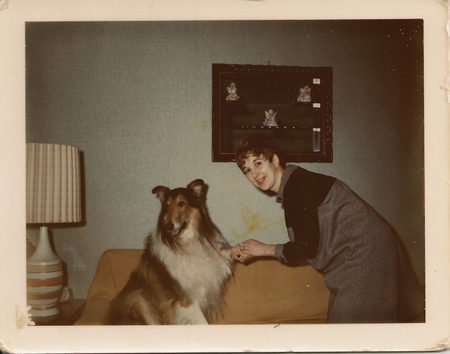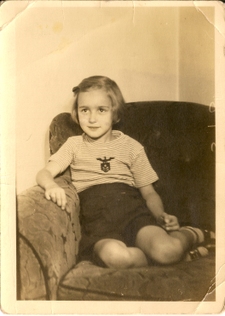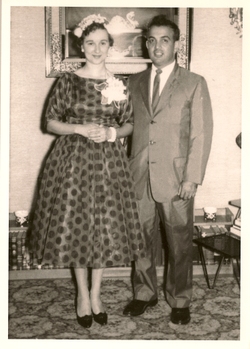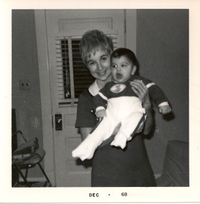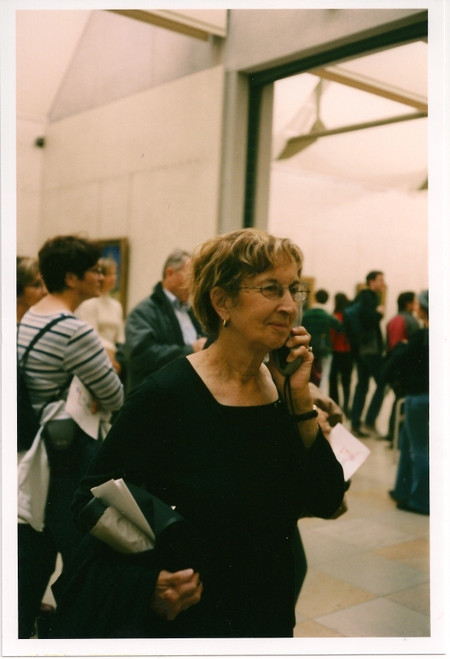Over at the New Yorker website, I’ve posted some thoughts about the late Aaron Swartz.
Category: obituaries
The real thing
After editing the late John Leonard for sixty-nine months, during which despite regular chemotherapy he never missed a deadline, Jennifer Szalai of Harper’s magazine looks back to their first month working together (subscription required):
I had the young editor’s tendency to err on the far side of caution. My queries to John weren’t many, but their phrasing was that of someone who had never met a hair she wouldn’t split yet was shy about wielding the knife. I recently opened up the Microsoft Word document on which we did most of our edits for that [first] column, last saved at 8:22 P.M. on February 11, 2003, and I saw a bold-faced query of mine after John’s reference to “a techno-rave, ZyloFlex body armor, and some stun-gun sex.” I had bolded “stun-gun sex” and added, “John: Just to clarify: Is ‘stun-gun’ meant metaphorically here?”
No, it most emphatically wasn’t.
“The great postmodern uncertainty that we live in”
I was very sorry to read this morning that David Foster Wallace died on Friday.
A fan of his work, I was lucky enough to interview him for the Boston Globe in October 2003 about his book Everything and More: A Compact History of ∞ [Infinity]. The interview took place in his room at a hotel that he was briefly staying at, in New York. According to my notes, when I arrived, Wallace “had been air conditioning the room in preparation for a nap, but he kindly stopped the fan, for the sake of the tape recorder. He was wearing a blue Pomona College sweatshirt with the sleeves torn off. Before the interview started, he served me a glass of club soda and applied a nicotine patch to his upper left arm, over which he put an armband. During the interview, whenever I managed to empty my club soda, he refilled it.”
He was a little wary at first; it seemed that he didn’t expect that I would have read his book. When he found out that I had, his first question was, “Does it seem halfway clear to you?” and once we started talking about the math, he seemed to relax and, as I wrote in my notes, was “certainly more self-composed than this reporter,” who was star-struck. Throughout, he was focused on helping me interview him. When, for example, he called a book that sentimentalized a mathematician’s life story “horseshit,” he immediately upbraided himself for saying something unquotable: “Shit fuck fuck shit—none of it can be used.” He repeatedly asked if he was answering my questions satisfactorily and repeatedly apologized for not being more clear or more concise.
The published interview, as is conventional with the genre, was an edited and condensed version of the conversation we actually had, which went into much more detail on the math and a bit more into what really intrigued me: parallels between the mathematics of infinity, as resolved by the nineteenth-century mathematician Georg Cantor, and certain ideas in Wallace’s novel Infinite Jest that for lack of a better adjective might be called “religious.” For example, during one exchange, part of which does appear in the published interview, Wallace and I were talking about whether numbers exist outside the minds of the mathematicians who think about them. People who think numbers do have an independent reality are called Platonists, and I wanted to ask Wallace if he was one, because he’d been a bit cagey about his own beliefs in the book.
CRAIN: So are you a Platonist? Do you think mathematical concepts exist?
WALLACE: [Pause.] How, if this is going to be in the article, how would you provide enough context for the question to make sense?
CRAIN: That would be the challenge for the—
WALLACE: Personally, between you and me, yeah, I’m a Platonist, and I think, I personally think that God has particular languages, and one of them is music and one of them is mathematics, and that’s not something I can defend, it’s just something I’ve felt in my tummy since I was a little kid, but how exactly to try to make sense of that and to fit it in any kind of a working philosophy, much less cross the street to buy a loaf of bread is a different matter. In a certain sense, really really in the ultimate sense, it doesn’t matter what I think, what the book is about is what Cantor and Godel thought. The fact that Kurt Godel was a Platonist, when Godel’s Incompleteness Theorem—
At that moment, aptly but unfortunately, the tape ran out, and I didn’t notice for a few minutes. Here is my memory of what we talked about in the interval, according to the notes I took at the time: Since Wallace had introduced Godel’s Incompleteness Theorem, I asked about the Infinite Jest character Pemulis (which, because I asked, Wallace said that he pronounced with a long e, but that I was free to pronounce however I liked)—I asked about Pemulis’s reassurance to Todd Possalthwaite that “you can trust math,” (p. 1071) and how Godel shows that this turns out not to be true. Wallace responded that it had been a long time since Infinite Jest, but that he had intended Pemulis to be “one of the book’s Antichrists,” and so readers shouldn’t take anything he said unskeptically. Then I asked about the physicality of Wallace’s fiction and how it felt to write about something as abstract as math. His first answer was to ask me if his fiction was any more physical than anyone else’s. Shortly after that, I noticed that the tape wasn’t moving, and flipped it over.
Somewhat later in the conversation, we came back to the topic, because of a line in Everything and More that I was curious about. (You probably have to have read Wallace’s book to follow every twist and turn in his reply, but the glory of the internet is that paragraphs don’t have to be perfectly intelligible to everyone to be worth posting.)
CRAIN: One question we haven’t really talked about is, you have a line where you say, “analogies to certain ideas of God are obvious.”
WALLACE: The book is rather odd, because there’s kind of the opening straw-boater-and-cane chapter, where you’re kind of trying to give a general overview about why this whole thing is going to be kind of mind-bending. I think the idea is that in the anthropology of religion, you basically build an idea of god by simply removing all the limitations you see, all the limitations and imperfections you see in the real world around you, is that what we’re talking about? And that infinity is kind of the same thing. Everything’s limited—imagine something without that. Probably a Kroneckerian [i.e., someone who doubts the independent existence of mathematical concepts—CC] would say, infinity and god are the same sort of thing, they’re pie-in-the sky dreams of people who haven’t adjusted to the ineluctability of limit in the universe and so like to dream of something without that, and it’s really just a unicorn. We’re just sticking various concepts together.
You have an odd facial expression when the person is answering the question because it usually looks like stark incomprehension. Did that make any sense at all?
CRAIN: Yeah yeah yeah.
WALLACE: Is the part of the book that I think your question’s referring to what it’s referring to?
CRAIN: Yeah. There’s a part in Infinite Jest, I don’t know which character it is, talking about, having trouble with the Higher Power and AA, and having to accept that— I think it’s Gately—that if he has a merely technical response, it will eventually work.
WALLACE: Interesting.
CRAIN: And I was sort of relating that to the idea of infinity as being mysterious and then Cantor coming along and having this technical apparatus for interfacing with it.
WALLACE: My guess, and again I’ve got to confess I don’t remember Infinite Jest very well, is that Gately’s talking about certain spiritual realities, and what you have to do to cultivate a relationship in a churchgoing or twelve-step-program-going versus, um, . . . You could say then that the whole agenda of this book [Everything and More] is very—diametrically?— different. We want not just to have a technical understanding of this. ‘Cause it really could be a booklet and could start at the last chapter and simply give you these . . . And there’s a certain interest about it. And in fact you really don’t need calculus to understand, for instance, Cantor’s diagonalization. Helps to know a little bit about the philosophy of math when you get into Cantor’s paradox and the Continuum Hypothesis and stuff. Much of the stuff in the book that’s hard in a math way is just providing context. Cantor just didn’t wake up one day and decide to do this. He was very much part of this math world. And to be honest, the whole reason for doing that is that it was the only way to write about this in a way that hadn’t been done before. And seemed to me to be somewhat worthwhile and was an interesting challenge. I sure wouldn’t say, if you’re interested in Cantor, just read the last chapter. I don’t think you can really understand Cantor if you don’t know something about Dedekind and the schnitt method, because the two of them, well whatever, they’re really twin towers. But he [Dedekind] doesn’t get much billing. He did a lot more for solidifying math, because he came up with a way to define irrationals that’s absolutely clean as a whistle.
Whereas Cantor, yeah, codifies the transfinite, but Cantor’s paradox is the first step into Godel’s incompleteness and self-reference. It’s at once this beautiful climax of the two hundred years before it and the first note of the funeral dirge for math as something that you can just, ‘You know what, we can explain the entire universe mathematically. All we have to do is come up with the right axioms and the right derivation rules.’ I mean, Cantor’s paradox starts the wheel of self-reference.
I don’t know if you know much about Godel’s incompleteness theorem. But in a lay sense, Godel is able to come up mathematically with a theorem that says, ‘I am not provable.’ And it’s a theorem, which means that math is either not consistent or it’s not complete, by definition. Packed in. He is the devil, for math.
Cantor’s paradox, that whole ‘If it’s not a member of the set, it is a member of the set,’ and then Russell’s paradox about twenty years later, those were the first two . . . You know, when you start coming on a really interesting theme in a piece of music, you usually hear it in echo notes that foreshadow it, those are the foreshadowings. And I don’t imagine Godel would have come up with the self-reference loop if it hadn’t been for Cantor and Russell. [Sotto voce] Whatever. You’re not interested.
CRAIN: When some of the technical questions about infinity are answered, this other abyss opens up.
WALLACE: Yeah. Infinity was the great albatross for math. Really ever since calculus. Infinitesimals were horseshit, and everybody knew they were horseshit. But the limits thing used natural language stuff like ‘approaches,’ which math isn’t supposed to do. So it’s this great shell game. Weierstrass, Dedekind and Cantor close all those holes, and it’s beautiful, and at the same time they open what turns out to be a much worse one, and that’s Godel. . . .
After Godel, the idea that mathematics was not just a language of god but a language we could decode to understand the universe and understand everything, I mean, that doesn’t work any more. It’s part of the great postmodern uncertainty that we live in. Very few people know about it.
CRAIN: Yeah, yeah. It’s a chilling way for the book to end.
WALLACE: The book ends very abruptly, because you come to the shore of an ocean I’m not even going to dip a toe into, because then we’re into three hundred more pages. . . .
I can’t think of any other contemporary novelist who thought about such philosophical questions with the same combination of depth, rigor, and feeling.
Barbara A. Terzian
Peter’s mother, Barbara A. Terzian, née Mendoza, died on Saturday, 19 April 2008, at age seventy-seven. She was born in 1930 in Troy, New York, and she married Peter’s father, Richard Terzian, in 1959. She worked as a case supervisor for the Rensselaer County Department of Public Welfare in the 1950s and 1960s. She was an avid reader, a devotee of the arts, a great fan of dogs, and an all-around generous, loving, accepting person. She is sorely missed.
There will be a wake at the Dufresne and Cavanaugh Funeral Home in Latham, New York, on Tuesday, April 22, from 5pm to 7pm, and a funeral mass at St. Ambrose Church on Wednesday, April 23, at 11am. If you’d like to make a donation in her name, please consider the Regional Food Bank of Northeastern New York.
The psychopath, the homosexual, and the reformer
In honor of the late Norman Mailer, here’s a review I wrote in 1999 of Mary V. Dearborn’s biography of him, and here’s Mailer’s feisty reply.

